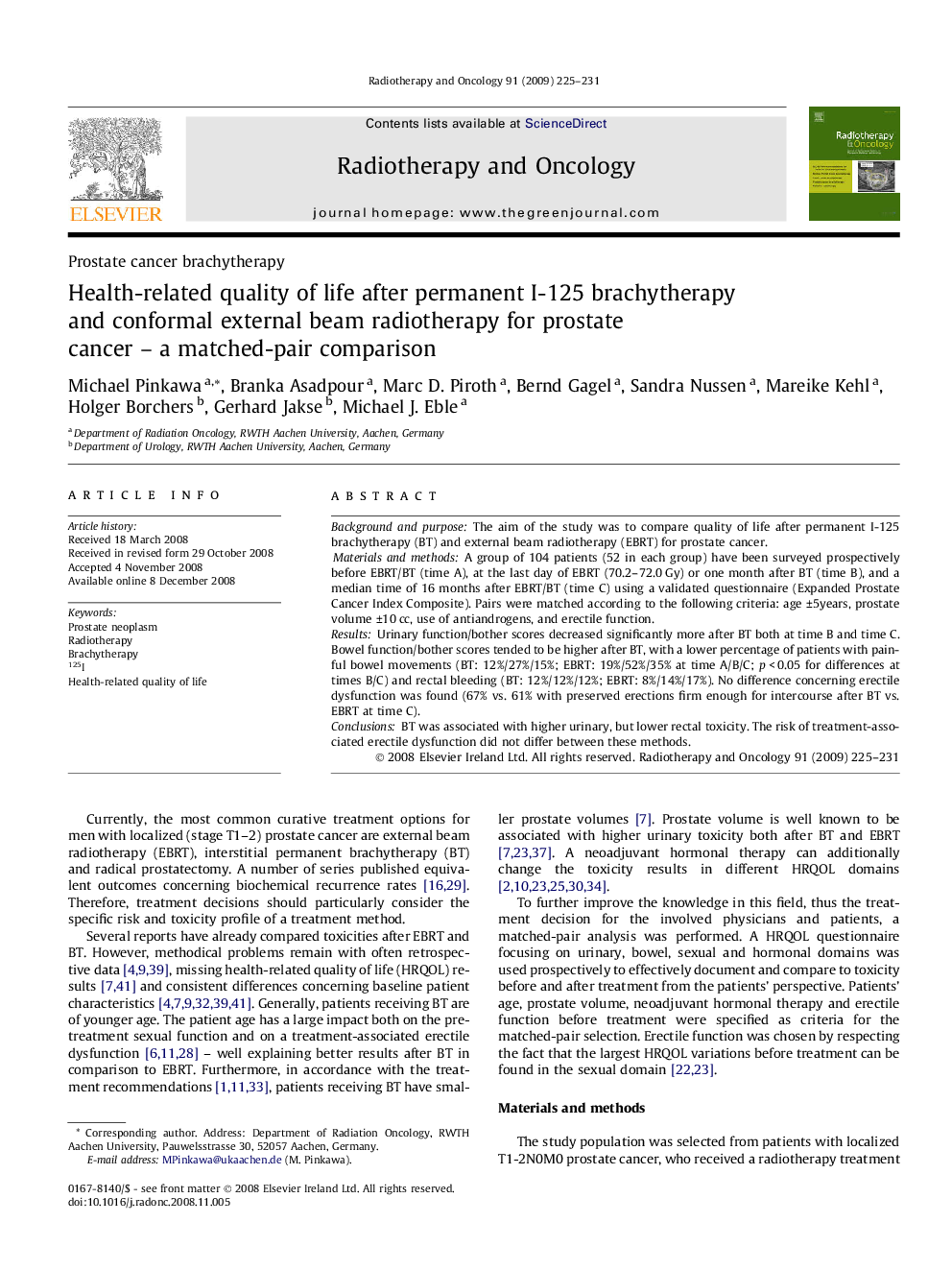| Article ID | Journal | Published Year | Pages | File Type |
|---|---|---|---|---|
| 2159274 | Radiotherapy and Oncology | 2009 | 7 Pages |
Background and purposeThe aim of the study was to compare quality of life after permanent I-125 brachytherapy (BT) and external beam radiotherapy (EBRT) for prostate cancer.Materials and methodsA group of 104 patients (52 in each group) have been surveyed prospectively before EBRT/BT (time A), at the last day of EBRT (70.2–72.0 Gy) or one month after BT (time B), and a median time of 16 months after EBRT/BT (time C) using a validated questionnaire (Expanded Prostate Cancer Index Composite). Pairs were matched according to the following criteria: age ±5years, prostate volume ±10 cc, use of antiandrogens, and erectile function.ResultsUrinary function/bother scores decreased significantly more after BT both at time B and time C. Bowel function/bother scores tended to be higher after BT, with a lower percentage of patients with painful bowel movements (BT: 12%/27%/15%; EBRT: 19%/52%/35% at time A/B/C; p < 0.05 for differences at times B/C) and rectal bleeding (BT: 12%/12%/12%; EBRT: 8%/14%/17%). No difference concerning erectile dysfunction was found (67% vs. 61% with preserved erections firm enough for intercourse after BT vs. EBRT at time C).ConclusionsBT was associated with higher urinary, but lower rectal toxicity. The risk of treatment-associated erectile dysfunction did not differ between these methods.
